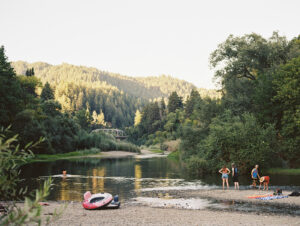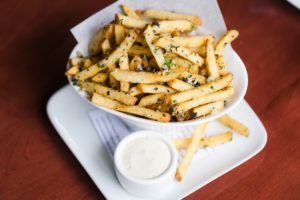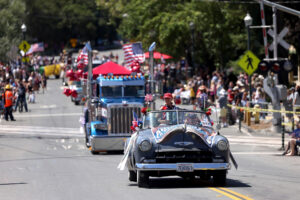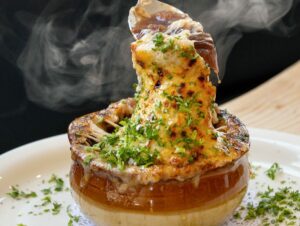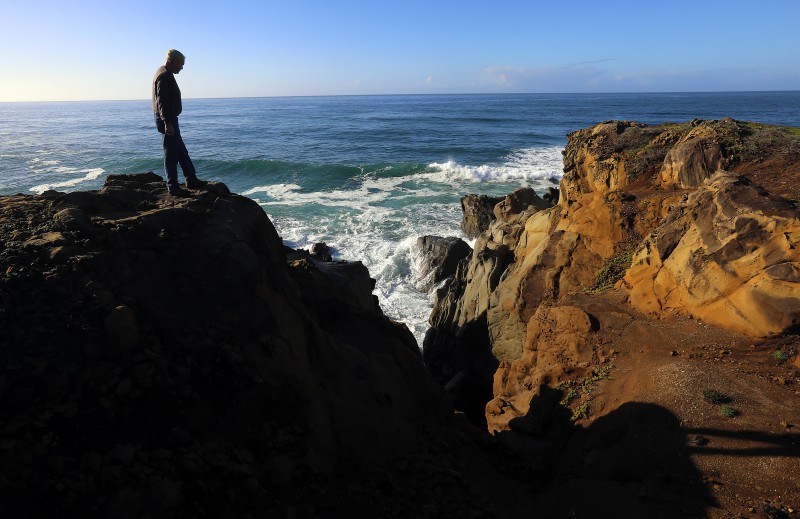At a small ocean cove north of Fort Ross, Greg Loarie and Chris Chouteau picked their way across a jumble of mussel-encrusted rocks and slick sea plants, their progress slowed and their footing made more precarious by the long swim fins they wore over stout neoprene booties.
The men, cousins from Healdsburg, had donned thick, black wet suits with hoods that left little exposed save for their faces, which would soon be obscured by dive masks and snorkels. They each carried what amounted to a modified inner tube that would function as both their stash for gear and floating rest station once they entered the roaring surf.
The cove was at the peak of a low tide and the area along the rocky shoreline looked like a drained and ragged bathtub. Chouteau, who’s been coming to this spot and others along the northern Sonoma Coast for two decades, kept a keen watch on the water.
“Usually when we dive here it’s deeper,” he said.
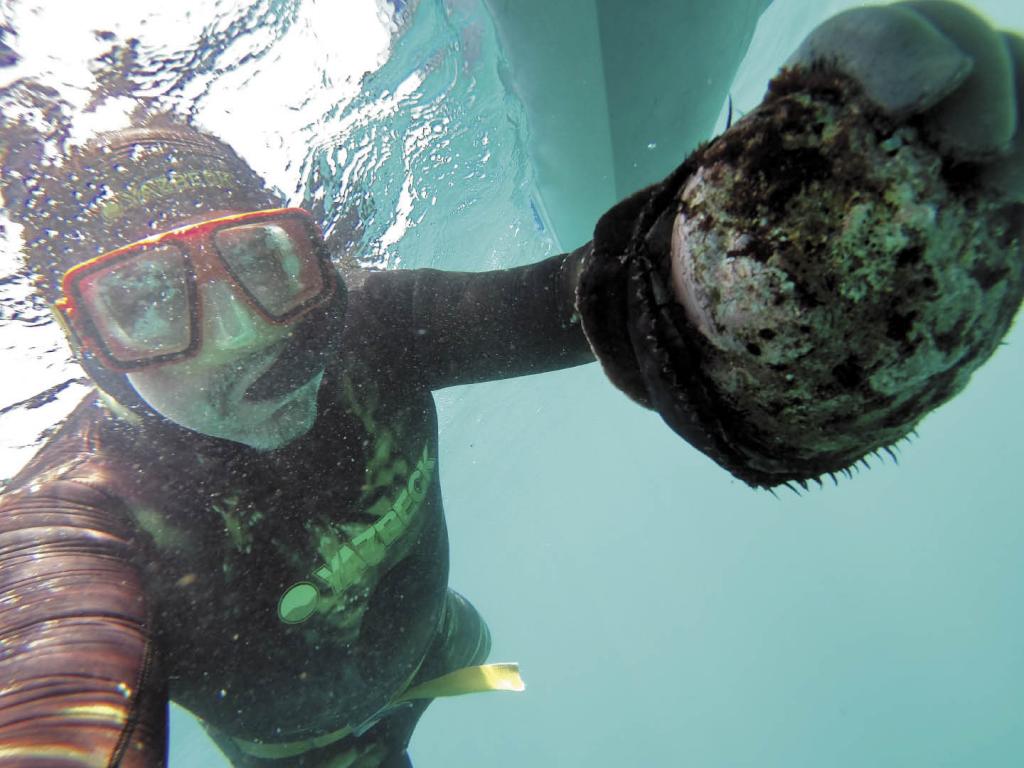
Already, three other black-hooded figures bobbed in the swells about 100 yards offshore. The sharp bark of a seal sounded across the ocean’s surface. Beneath lay a world hidden to most and explored each year by a relative hardy few in search of a prized catch: red abalone.
Loarie and Chouteau had driven through dense white fog on this morning in mid-May to resume their annual underwater hunt for the elusive shellfish, a species that exists only on the west coast of North America and has drawn generations of divers to the wave-battered coves and crevices of the North Coast. Abalone hunters come to the area in the thousands from across the state and country each year, from April through November, often with their families in tow, to brave cold and sometimes deadly seas in search of the edible mollusk with an iridescent shell lining.
The sport is sustained not just by the succulent reward — a slightly sweet, buttery meat pounded out for tenderness and often breaded for the pan — but also by the family traditions it spawns and the adventure it holds in store.
For Loarie, who was marking his 40th birthday in May, it offers an extraordinary way to experience the North Coast. “It reminds me sort of a redwood forest,” with towers of kelp and sea life blanketing formations on the ocean floor, he said. “Everything’s got something growing on it. It’s like a rainforest underwater.”
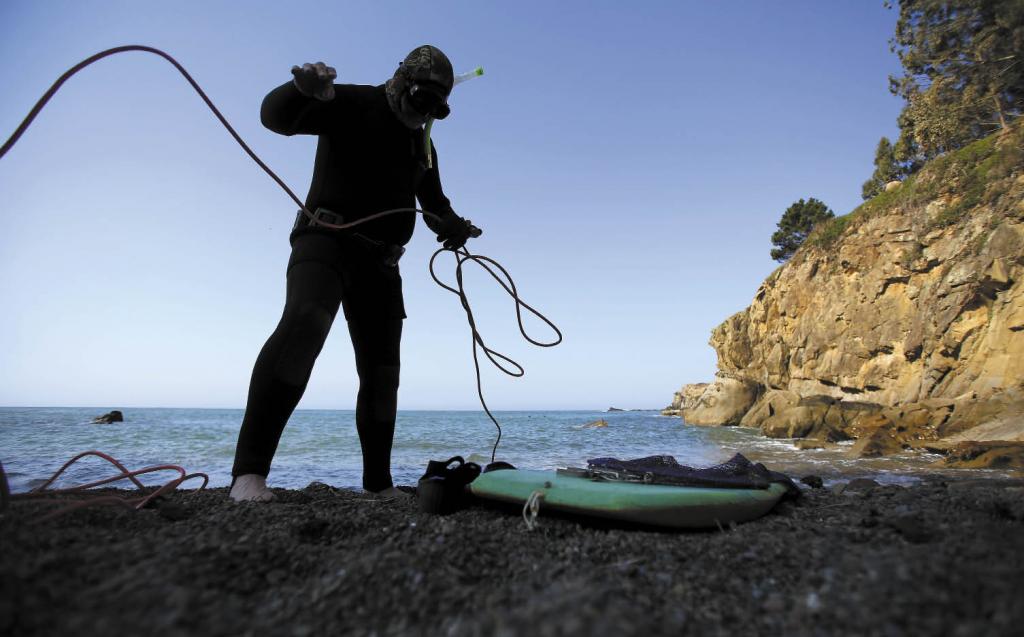
For Nick Brunn, a Santa Rosa native who grew up hunting for abalone and now works as a research chemist, the exploration is “unlike anything else.”
There’s “something personally fulfilling about the challenges involved with taking your air at the surface, diving down, pushing your limits, and enjoying the beauty, power and majestic nature of the ocean,” said Brunn, 31.
The rugged coastline of Sonoma and Mendocino counties, removed only an hour or so from the urban Bay Area, accounts for all but 2 percent of the annual catch of red abalone, the only species of its kind open to sport harvest in California, and only in waters north of San Francisco. (The state banned commercial harvest of abalone two decades ago to curb overfishing, and it is illegal to sell wild-caught abalone.)
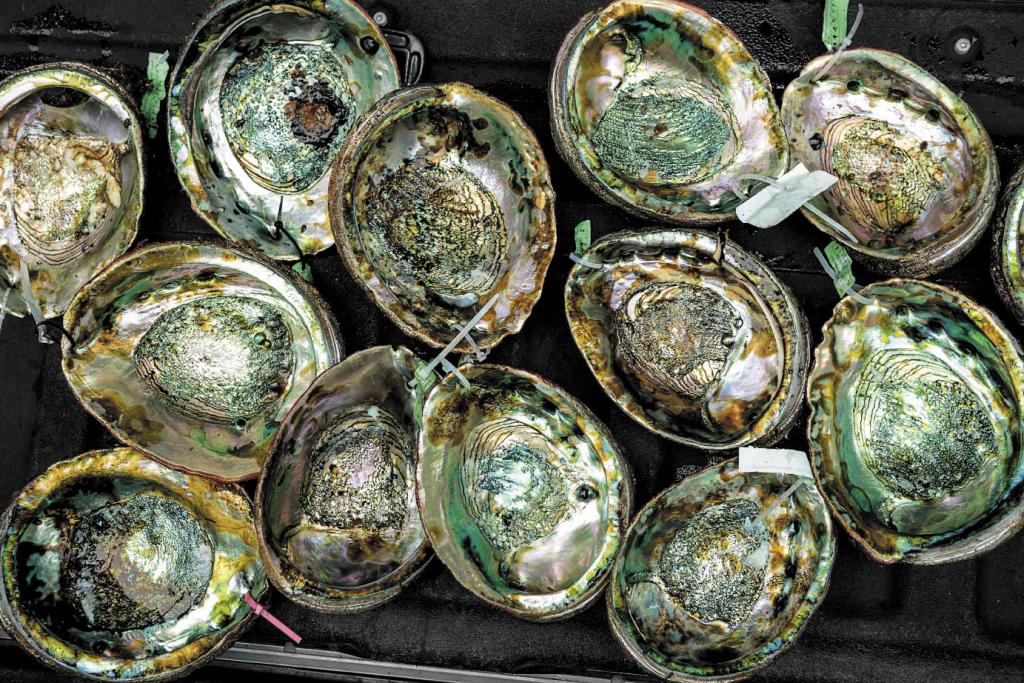 The divers who now arrive on these shores come equipped with little else than a wet suit, a modified pry bar and weight belts lashed around their waists. They must use only their own breath — no
The divers who now arrive on these shores come equipped with little else than a wet suit, a modified pry bar and weight belts lashed around their waists. They must use only their own breath — no
scuba gear allowed — to find and unfasten the snail-like creatures from their dark, rocky roosts. Only those that would span a good-sized salad plate can be taken, with strict daily and seasonal “bag” limits for each diver.
The sport is growing in exposure but it is still regarded as a maverick among marine pursuits, set apart largely by the dangers that lurk in the waves. The relentless force of the sea and the physical demands on the body claim victims nearly every year. The grim 10-year toll on the Sonoma and Mendocino coast grew this spring to at least 49 deaths when three people in the same party — two of them from out of state — stepped off a craggy point near Fort Bragg and succumbed in rough conditions.
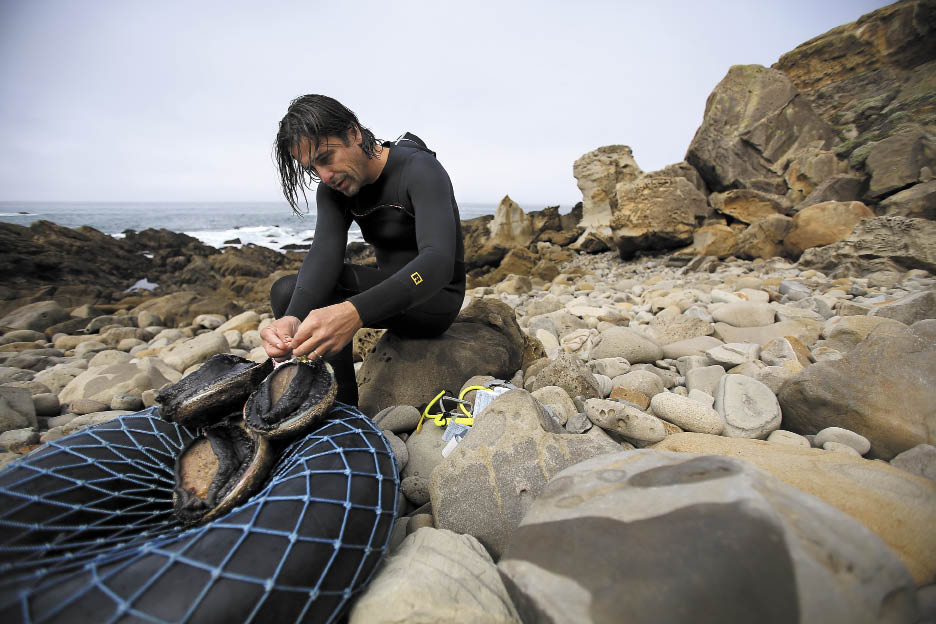
Danny Hervilla, a retired Mendocino fire chief who spent a
quarter-century rescuing imperiled divers and recovering those who died, does not question the sport’s appeal. A diver himself, he said the allure is for “that cave man” in everyone, “that hunter-gatherer thing.”
But his experience long ago led him to regard the hunt as a potent two-way encounter. He calls abalone “the deadliest creature in the sea.”
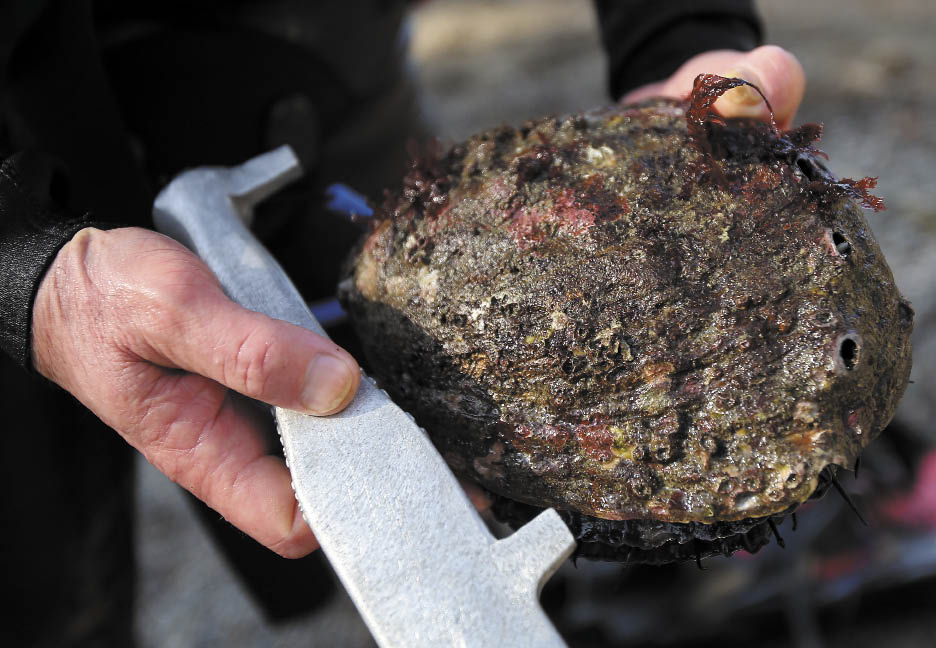
And even in relatively calm conditions, the risks of the sport are apparent. Just minutes into their outing, Loarie and Chouteau were separated by a series of waves that crashed atop Chouteau, sending his float tube all the way back to the shoreline. He swam in, climbed over rocks to retrieve the tube, took off his fins to access a different re-entry point on the shore and waded back into the water.
It was 10 minutes before the men, both attorneys and diving buddies since childhood, were reunited about 75 yards offshore. They bobbed in water about 20 feet deep, the stems of their snorkels small chimneys in a vast sea. As the minutes passed, they repeatedly curled their bodies into tight dives, their heads vanishing and their fins propelling them down into another world.
Red abalone are cousins of the common garden snail. They have domed, slightly spiraled shells and a muscular foot they use to clamp onto the rocky ocean floor firmly enough to withstand the constant motion of waves.
Most abalone are caught in less than 30 feet of water. They are pried free with an ab iron, a spatula-like tool with rounded edges that can be slid under the soft body to pop the creature free. Abalone must be a minimum 7 inches across to be legally harvested.
For many, the hunt for the sea snails is a cherished seasonal rite, rooted in family traditions, including annual feasts and camping trips. The fishery’s busiest period comes in early August when the seven-month abalone season reopens after a monthlong break and families gather for a last hurrah of summer.
The sport itself remains dominated by men, with many introduced to the hunt by fathers and grandfathers. Even decades later, the rituals leave deep impressions: the early morning wake-up, the overland slog to the shoreline, and the gasp-inducing plunge into chilly waters beneath a dawning sky.
“The first time I went I was 12, and it was cold — really cold, and a little scary,” said Fairfield resident Brandon Balbas, 26. He was camped this spring at Van Damme State Park in Little River, where his father had organized an abalone cookout for about 30 people.
Ed Balbas, Brandon’s 78-year-old grandfather, was among the group. He remains an avid diver.
“I come from humble beginnings,” said the elder Balbas, a retired Lockheed Martin engineer. “Everything I do is about getting food.”
For Windsor resident Jason Robinson, 44, the introduction to ab diving came from his father, who taught him and his sister to dive as young kids in a cove near Fort Ross that the elder man had dubbed “the Washing Machine.”
Robinson’s father, Clegg Robinson, who picked up the pastime from his father, made his kids wet suits cut from sheets of neoprene. The family also melted down lead wine foils gleaned from friends in the wine industry, then poured the molten metal into molds for do-it-yourself weight belts.
Clegg Robinson made his own tenderizing mallet, too, using a wood four-by-four that wouldn’t tear up the meat like metal did, said his son, a sales and marketing director for Field Stone Winery & Vineyard in Healdsburg.
After a dive, the family would feast on eggs, bacon and abalone prepared “right on the rocks,” Jason Robinson said.
Many divers today learned to pick first, going out to the ocean’s edge during low and very low “minus” tides, back when red abalone were so plentiful that the withdrawing waves would reveal rocks carpeted with their shells.
Santa Rosa animal rescue maven Mary Quinn, nostalgic for her girlhood days on the shores of Point Arena, said she wishes she still had one of the little tide books her late father would consult so religiously to time their hunts.
“We would go down the cliff really early in the morning and we’d take crowbars and just pluck them off,” said Quinn, 57.
She’d get tired after a while, but her dad never did. “That was food on our table,” Quinn said.
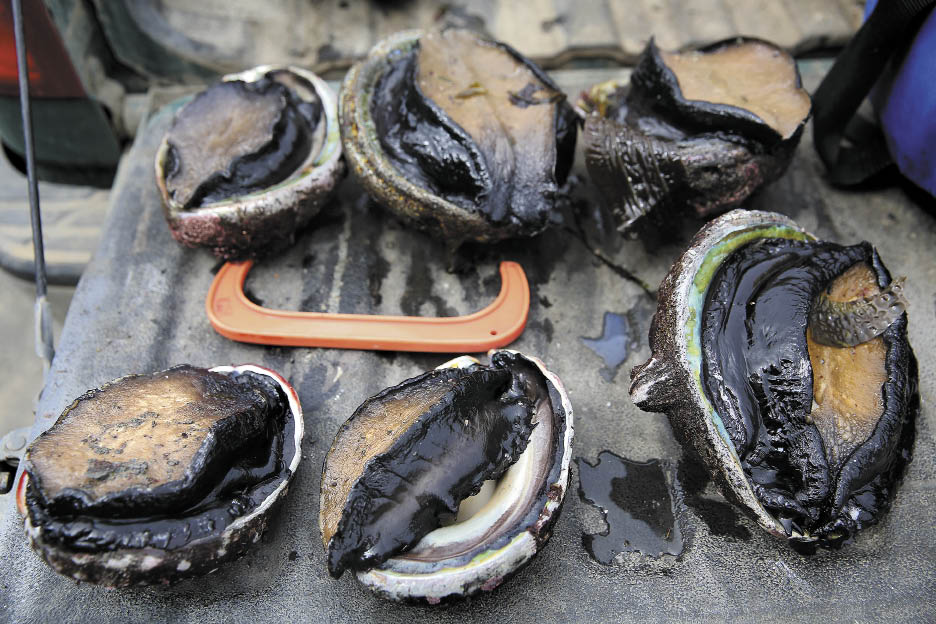
The growing appetite for the shellfish and the market that developed for its trade had harmful consequences for the fishery.
Overharvesting by sport and commercial divers from the 1950s through the 1970s severely diminished abalone off the California coast, and the sport fishery is now a tightly regulated affair. Divers and pickers must comply with a long list of rules and limits — safeguards that officials say are meant to protect the fishery but which many people choose to skirt or ignore.
Each year, a small corps of game wardens stretched thinly up and down the coast catch some of those flouting the law, but they’ve had minimal lasting success against poachers.
A small number of commercial farms in California supply more than 200,000 pounds of abalone meat a year, sold mostly to high-end restaurants and shops at widely varying prices. The price for small, tenderized steaks can go as high as $130 a pound, while live abalones still in the shell generally fetch around $25 to $35, though they are significantly smaller than what would be legal for a fisher to collect from the wild, measuring about 3 to 5 inches across.
The agency once estimated that poachers absconded with 250,000 abalone from coastal waters each year, about the same number legally collected and reported by sport divers and rock pickers.
New restrictions imposed by the state before the start of the 2014 season cut the seasonal bag limit for each diver by a quarter — to 18 abalone, half of which can come from the Sonoma Coast. The Fort Ross shoreline also was closed to abalone hunting until the population there can recover.
The moves have shifted hunting pressure north, into Mendocino County, according to wildlife officials and divers. Diving just north of the Fort Ross closure boundaries last May, Loarie and Chouteau reported seeing fewer abalone than they’re used to seeing.
Loarie, an environmental attorney, said he generally hunts now near Fort Bragg, where the fishery is in better shape. After a large abalone die-off in 2011 linked to a red tide event, he said he is content to dive for pleasure, taking just enough shellfish necessary each year “to scratch the itch.”
“Especially with little kids, the worst fear is that this thing we took for granted won’t be available for them,” he said.
The enthusiasm for the sport among veterans and rookies alike, however, can run headlong into bad decisions about its inherent risks, including constantly changing ocean conditions. The results when things go wrong are all too often fatal.
That was the case in April, when the three divers from the same group died in Mendocino’s Caspar Cove. The party, numbering roughly a dozen people, was led by an East Bay man who was described as an experienced diver. But many who observed conditions that day said the ocean was not fit for diving, especially in an area where water surged into a cove and around a point, causing a forceful churn.
Some who survived were rescued as they clung desperately to the rocks. A local fisherman who stood on the bluff above said he had tried to warn the men away from entering the surf.
“There was no visibility and it was just senseless,” Steve Szychowski said days afterward in an interview. “It was a horrible tragedy … an amazing tragedy that went on.”
Seasoned divers say the danger implied by such cases is often overblown, giving the sport an unjustified rap as an extreme activity.
“It’s really not,” said Steve Lackey, a dive instructor at Sub-Surface Progression Dive Shop in Fort Bragg. “With just a little bit of common sense, and reading the conditions …it’s really a very safe activity.”
But it is not one learned overnight. And often the toughest part of that education is knowing when to sit out a dive, longtime hunters and public safety officials said.
Conventional wisdom in diving circles urges abalone seekers to reduce their risk by spending at least 15 minutes watching the waves, gauging their size and pattern before they wade in. When conditions are dicey, divers must be willing to turn around and go home.
The human tendency to ignore the advice and take a big risk has been given a name: “Sacramento syndrome.”
“People who have driven 100, 150 miles, they’re going in when the water gets rough,” said Tom Stone, owner of Sonoma Coast Divers in Rohnert Park. “That’s when you really get into trouble. … Those are the days you should really find something else to do.”
Salt Point State Park lifeguard Joe Stoffers, who oversees one of the busiest stretches of coastline for ab divers, said there is often little one can say to discourage someone hell-bent on hunting.
“People come here specifically to get abalone, and if they don’t get abalone, they feel like their trip to the coast has failed,” Stoffers said. “Or they have an ab feed or barbecue, or that night they’re camping, and planning on serving abalone.”
Stoffers said people in his trade, by necessity, become quick studies in body language and behavior. They observe how people handle their equipment, where they enter the water and how they approach the waves, gleaning enough about their competence that a lifeguard can anticipate who needs watching and, perhaps, help.
That said, “We’ve had people drown and we’ve had rescues on the best dive-condition days of the year, when visibility’s amazing and it’s pancake-flat,” Stoffers said.
Longtime Stewarts Point Store proprietor Arch Richardson, now retired, has dived for abalone most of his 68 years. He also served as a volunteer firefighter and a reserve Sonoma County sheriff’s deputy for about a decade, helping out on rescues and fatal incidents involving divers.
“So I’ve seen both sides of it,” he said.
He recalled a long period during which he kept an authentic body bag in his Highway 1 market for use when he felt called to dissuade a would-be diver from going out in unfavorable conditions. It didn’t always work.
Three times while he still had his deputy’s badge, Richardson found himself comforting the widow or companion of someone who had come by the store in the hours before a fatal dive.
“She’d say, ‘Why does your face look familiar?’” Richardson recalled. “And I’d say, ‘I’m the one who told you (not to go) and had to sell your husband the license.’
“It always put a lump in my throat,” he said.
Many dedicated abalone divers say the sport fulfills their craving for physical activity and close encounters with the natural world. Amid the exertion and beneath the waves, they say the experience can be peaceful, even Zen-like when the water is clear and calm.
“I find it very relaxing and tranquil out there,” said Monte Rio resident Matt Mattison, 39, a well-known area diver, instructor and founder of an online forum called Norcal Underwater Hunters. “Yes, our oceans can be some of the roughest and most dangerous in the world. But when the water’s right and the conditions are right, we have the best diving in the world.”
The adventure of underwater exploration and the shared camaraderie that comes with it keep generations of family and friends coming back to the same shores, year after year.
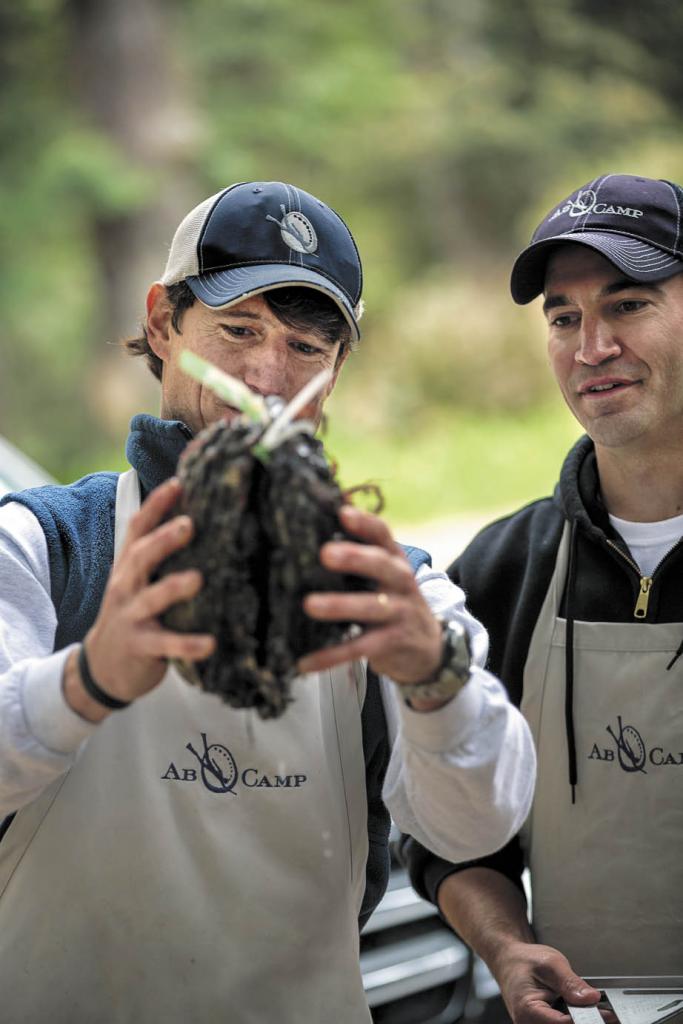
Childhood memories of tide-pooling, the scent of ocean-buffeted pine and campfires, and the feeling of community led Santa Rosa sports medicine doctor Todd Weitzenberg to re-establish a longstanding family tradition of meeting with friends on the Mendocino Coast each year for abalone diving.
The annual pilgrimage had faded when his own generation went off to college. Returning to the region after medical school and residency with his own young children 17 years ago, Weitzenberg, 46, longed to recreate the experience for them. The result was Ab Camp, a celebration of old friends and extended family that this year drew about 65 people to adjacent campsites in Van Damme State Park over Mother’s Day weekend. The campers, sporting sweatshirts, beanies, aprons, coolers, mugs and other gear bearing the Ab Camp logo that Weitzenberg trademarked, are lured yearly by abalone, but also by the chance to get away together.
Divers in camp were outnumbered by others, including runners, hikers and cyclists setting out or returning from their own adventures. The motley gathering has come to serve as an annual recharge point for all who participate, Weitzenberg said, reminding them of “what’s important in life, which is your family and your friends.
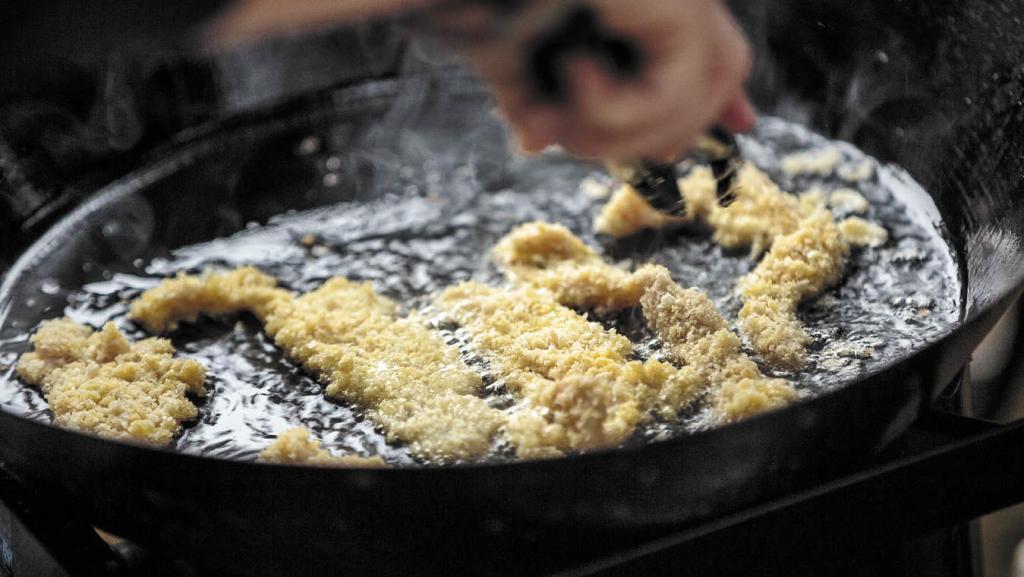
“It’s one of those things where, in the weeks preceding, I always think, ‘God, I’m so busy. I don’t think we can pull this off for another year.’ And the sentiment when we’re up there is, ‘Why don’t we do this more often?’”
Back amid the swells in the rocky cove near Fort Ross, Loarie and Chouteau had been diving down and popping up for air for about an hour. They were keeping to an area not far from shore, which historically held more abalone than grounds farther out, where the other three divers were hunting when they first arrived.
Conditions were not ideal, with underwater visibility at about 10 feet, making it more difficult to spot the shellfish, which like to hide under ledges or sideways in holes in the rock. Rarely do you look down and see them on top of the ocean floor, ready for the taking, divers said.
As the cousins searched, they saw other things, though: numerous fish, including a ling cod and a type of rock fish Loarie called “blues.” A seal came very close and seemed to be checking them out. Vegetation sprang up from the floor. It would grow more robust through the summer, with bull kelp so thick by late season that divers would have to part the plants to get to the snails, like brushing back curtains.
The men, related through their mothers, have been diving together for nearly three decades. They keep a watch out for each other in the water and consider themselves cautious divers, but they do not dwell on the dangers.
Loarie, for his part, is puzzled by the near mythic status abalone hunting has acquired over time. “People talk about it as if it’s going after the white whale for Captain Ahab or something,” he said. “I’ve never understood that. I think of it, from my perspective, as a very safe and not particularly difficult thing to do.”
Eventually, the men turned for shore. Loarie paddled in first and scrambled up on to the rock to let out a joyous yelp.
“Weehee!”
He pulled off his wet suit hood, flipped back his damp hair and flung his weight belt onto the rocks. Chouteau arrived a minute later. Both men had the limit of three abalone and appraised each other’s catch. “I always think I’m not going to find any, so I take sort of small ones,” Chouteau said. “I think it’s better to take more time.”
They proceeded to the beach, where they would fill in their mandatory report card on the day and tag the abalone they’d picked. Loarie threaded his tags through breathing holes on the shells using red and white twine from the stash his 6-year-old daughter uses to make friendship bracelets.
As they went about their work, stripping off their wet suits and sorting other gear, the ocean chop died down and the cove’s surface grew nearly calm. An osprey flew overhead, its talons gripped hard on a fish. “The ride of its life,” Loarie said.
It was the first trip of the season for the men. Chouteau already was anticipating his next dive during an annual Father’s Day outing on the Mendocino Coast with extended family.
Loarie figured he’d be back, too, the pull of the ocean pursuit too powerful to resist.
“Every once in a while, you just hit that beautiful day,” he said, “and everything’s amazing, and the visibility is great. And it’s just so stunning to be in a giant aquarium, just hanging out.”



